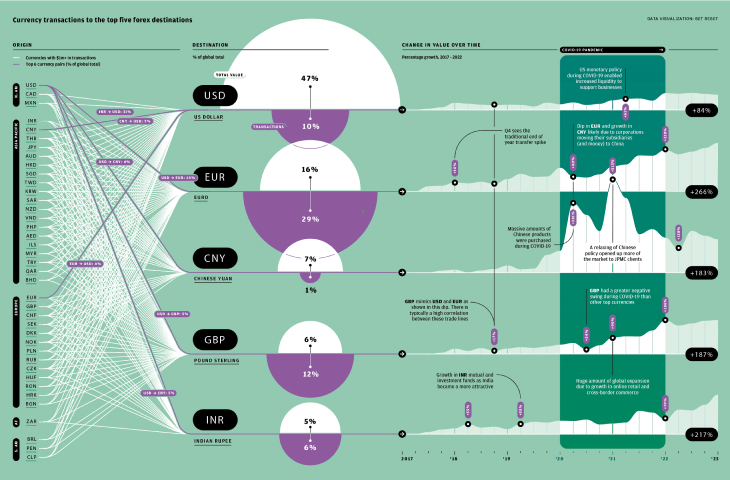From startups to legacy brands, you're making your mark. We're here to help.
-
Innovation Economy
Fueling the success of early-stage startups, venture-backed and high-growth companies.
-
Midsize Businesses
Keep your company growing with custom banking solutions for middle market businesses and specialized industries.
-
Large Corporations
Innovative banking solutions tailored to corporations and specialized industries.
-
Commercial Real Estate
Capitalize on opportunities and prepare for challenges throughout the real estate cycle.
-
Impact Banking & Advisory
When our communities succeed, we all succeed. Local businesses, organizations and community institutions need capital, expertise and connections to thrive.
-
International Banking
Power your business' global growth and operations at every stage.
Key Links
Prepare for future growth with customized loan services, succession planning and capital for business equipment.
-
Asset Based Lending
Enhance your liquidity and gain the flexibility to capitalize on growth opportunities.
-
Equipment Financing
Maximize working capital with flexible equipment and technology financing.
-
Trade & Working Capital
Experience our market-leading supply chain finance solutions that help buyers and suppliers meet their working capital, risk mitigation and cash flow objectives.
-
Syndicated Financing
Leverage customized loan syndication services from a dedicated resource.
-
Commercial Real Estate
Capitalize on opportunities and prepare for challenges throughout the real estate cycle.
-
Employee Stock Ownership Plans
Plan for your business’s future—and your employees’ futures too—with objective advice and financing.
Key Links
Serving the world's largest corporate clients and institutional investors, we support the entire investment cycle with market-leading research, analytics, execution and investor services.
-
Institutional Investors
Putting your long-tenured investment teams on the line to earn the trust of institutional investors.
-
Markets
Direct access to market leading liquidity harnessed through world-class research, tools, data and analytics.
-
Prime Services
Helping hedge funds, asset managers and institutional investors meet the demands of a rapidly evolving market.
-
Global Research
Leveraging cutting-edge technology and innovative tools to bring clients industry-leading analysis and investment advice.
-
Securities Services Solutions
Helping institutional investors, traditional and alternative asset and fund managers, broker dealers and equity issuers meet the demands of changing markets.
Key Links
Providing investment banking solutions, including mergers and acquisitions, capital raising and risk management, for a broad range of corporations, institutions and governments.
-
Center for Carbon Transition
J.P. Morgan’s center of excellence that provides clients the data and firmwide expertise needed to navigate the challenges of transitioning to a low-carbon future.
-
Corporate Finance Advisory
Corporate Finance Advisory (“CFA”) is a global, multi-disciplinary solutions team specializing in structured M&A and capital markets. Learn more.
-
Development Finance Institution
Financing opportunities with anticipated development impact in emerging economies.
-
Sustainable Solutions
Offering ESG-related advisory and coordinating the firm's EMEA coverage of clients in emerging green economy sectors.
-
Mergers and Acquisitions
Bespoke M&A solutions on a global scale.
-
Capital Markets
Holistic coverage across capital markets.
Your partner for commerce, receivables, cross-currency, working capital, blockchain, liquidity and more.
Key Links
A uniquely elevated private banking experience shaped around you.
-
Banking
We have extensive personal and business banking resources that are fine-tuned to your specific needs.
-
Investing
We deliver tailored investing guidance and access to unique investment opportunities from world-class specialists.
-
Lending
We take a strategic approach to lending, working with you to craft the right financing solutions matched to your goals.
-
Planning
No matter where you are in your life, or how complex your needs might be, we’re ready to provide a tailored approach to helping your reach your goals.
Whether you want to invest on your own or work with an advisor to design a personalized investment strategy, we have opportunities for every investor.
-
Invest on your own
Unlimited $0 commission-free online stock, ETF and options trades with access to powerful tools to research, trade and manage your investments.
-
Work with our advisors
When you work with our advisors, you'll get a personalized financial strategy and investment portfolio built around your unique goals-backed by our industry-leading expertise.
-
Expertise for Substantial Wealth
Our Wealth Advisors & Wealth Partners leverage their experience and robust firm resources to deliver highly-personalized, comprehensive solutions across Banking, Lending, Investing, and Wealth Planning.
Explore a variety of insights.
Key Links
Insights by Topic
Explore a variety of insights organized by different topics.
Key Links
Insights by Type
Explore a variety of insights organized by different types of content and media.
Key Links
We aim to be the most respected financial services firm in the world, serving corporations and individuals in more than 100 countries.
Key Links
- Payments
- Payments Unbound
- Payments Unbound - Volume 2
- What's Needed to Make the "Digital ID" Happen

What will it take to make “Digital ID” happen?
TWO SIDES OF THE SAME COIN
Digital transactions have made our lives more convenient, but fintech innovators are keen to solve remaining frictions. Checkout pages on the web often require filling out forms and sharing banking details, for example, and there are opportunities for fraud. That’s where digital ID systems can potentially help. These allow individuals to digitally store their personal information in a robust, secure, and convenient app, which can be used to share credentials quickly and securely. And with the EU planning to launch a digital ID wallet in 2024, it’s a topic that’s rising up the agenda. Yet, there are challenges to solve before digital ID becomes mainstream, which is why they are a feature of so few economies. So, what’s the main factor that will spur mass adoption?

Raul Kaidro
Chief Executive Officer of Estonia-based RaulWalter, which implements “digital ID” in the public and private sector“Before we see broad utilization of ‘digital ID’ systems, we need to build trustworthiness. This is because inherent in the capture, storage, and use of any personal data are risks of privacy violations, data theft, and identity fraud. The problem I see is that for most people, it is not clear how and where this data will be stored, or who will make sure that it remains secure and confidential. What happens to the data after the service has been delivered?
“When you rent a car, for instance, what kind of information will be passed on to the rental company? Will they collect everything, including your credit history and perhaps the list of your traffic violations? Moreover, how can a service provider making decisions based on the data submitted be sure that the data received is accurate and legitimate?
“For electronic identities to be adopted, they must be trusted across the spectrum of services within the nation, and eventually across borders. In order to make this happen, governments must take initiative for firstly creating, and then managing and protecting, our digital IDs. The reason I say this is that, when it comes to passports—a physical certificate of citizenship—everybody trusts them because there is only one place you can legally get one: the State. Why should it be any different for electronic identity?”

Mark Heymann
Executive Head of Business Development at South Africa-based Direct Transact, which runs the digital identity platform identity“The first step to creating a digital identity is confirming your identity. This becomes the definitive source against which your ID or passport, photos, company documents, and address information can be verified against. To do this, you must go to a digital verification agency, which is straightforward. But when the customer goes to a service provider, such as
a car rental agency or a bank, their systems are not always capable of pulling the information they need as part of the onboarding process.
“What we’ve seen is that there’s a legacy layer that is not modernized, which means the onboarding process can be clunky and slow. This requires people to take physical papers and ID documents, and I think this is a major barrier for large businesses looking to integrate digital identity.
“Customers also have to become comfortable with the fact that banks, for instance, have their information. What customers don’t like is having their information shared without them explicitly giving consent. Moving forward, I’m confident we’re going to see more and more individuals controlling their own data and sharing it with institutions, who can use that information based on the consent they’ve been given. That’s why we have to simplify the integration barrier.”
BY WIRED
Need approved text
Need approved text
You're now leaving J.P. Morgan
J.P. Morgan’s website and/or mobile terms, privacy and security policies don’t apply to the site or app you're about to visit. Please review its terms, privacy and security policies to see how they apply to you. J.P. Morgan isn’t responsible for (and doesn’t provide) any products, services or content at this third-party site or app, except for products and services that explicitly carry the J.P. Morgan name.





































